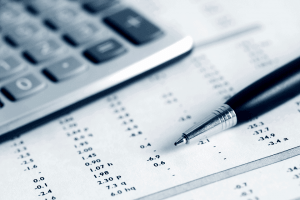
Mark to market aims to provide a realistic appraisal of an institution’s or company’s current financial situation based on current market conditions. The informal phrase “closing the books” describes an accountant’s finalization and approval of the bookkeeping data covering a particular accounting period. When an accountant “closes the books,” they endorse the relevant financial records. These records may then be used in official financial reports such as balance sheets and income statements.
Allowing banks too much latitude would paper over the problem, making banks look healthier than they are, they say. “It’s an issue because … the year before the crisis was the first in which firms were required to follow a new set of fair-value measurement tools,” according to Wharton accounting professor Catherine M. Schrand. But potential buyers of toxic assets will make their own valuation assessments regardless of what the accounting rules allow the banks to claim, says Wharton finance professor Itay Goldstein.
Meaning of accounting in English
When this is contained and reflected in financial statements, financial institutions can then adjust assets account if borrowers defaulted on their loan payments in the course of the year. Companies adjust or mark these assets to the fair value given by Mark to market. However, if the measurement does not reflect the fair or true value of accounts, problems may arise. Calculating the price if an asset when there is market volatility of financial crisis can result in inaccuracy of the measurement of an asset’s value.
The term “hedge” means any position which manages the dealer’s risk of interest rate or price changes or currency fluctuations, including any position which is reasonably expected to become a hedge within 60 days after the acquisition of the position. On April 2, the Financial Accounting Standards Board (FASB) is expected to vote on a proposal to relax an accounting standard at the heart of the financial crisis — or at least the accounting of it. If the banks were forced to mark their value down, it would have triggered the default clauses of their derivatives contracts. The contracts required coverage from credit default swaps insurance when the MBS value reached a certain level. It would have wiped out all the largest banking institutions in the world. This can create problems in the following period when the “mark-to-market” (accrual) is reversed.
Bank survey: Finance officers optimistic about economic outlook
It is used primarily to value financial assets and liabilities, which fluctuate in value. The accounting thus reflects both their gains and their losses in value. In securities trading, mark to market involves recording the price or value of a security, portfolio, or account to reflect the current market value rather than book value.
- At the end of each fiscal year, a company must report how much each asset is worth in its financial statements.
- Diversification describes a risk-management strategy that avoids overexposure to a specific industry or asset class.
- That includes certain accounts on a company’s balance sheet and futures contracts.
- Other accounts will maintain their historical cost, which is the original purchase price of an asset.
- FAS 157, the rule approved in 2007, set clearer rules about the use of three different accounting measures, according to Bushee.
- But the banks kept the value on their books at the original price.
An accounting cycle is an eight-step system accountants use to track transactions during a particular period. Bundles of mortgages could be bought and sold, as they are today, but values were fairly easy to determine because they were more uniform. Some mortgage bundles were converted into mortgage-backed securities, which could be sold to investors as a type of bond. But this business was dominated by the government-authorized firms Fannie Mae and Freddie Mac, which had strict criteria for eligible mortgages.
Preparing for the departure of an information security officer
The most infamous use of mark-to-market in this way was the Enron scandal. Historical cost accounting is an accounting method in which the assets listed on a company’s financial statements are recorded based on the price at which they were originally purchased. At the end of the fiscal year, a company’s balance sheet must reflect the current market value of certain accounts. Other accounts will maintain their historical cost, which is the original purchase price of an asset.

The latter cannot be marked down indefinitely, or at some point, can create incentives for company insiders to buy them from the company at the under-valued prices. Insiders are in the best position to determine the creditworthiness of such securities going forward. In theory, this price pressure should balance market prices to accurately represent the “fair value” of a particular asset. Purchasers of distressed assets should buy undervalued securities, thus increasing prices, allowing other Companies to consequently mark up their similar holdings. Under generally accepted accounting principles (GAAP) in the United States, the historical cost principle accounts for the assets on a company’s balance sheet based on the amount of capital spent to buy them.
Accounting Period
What this means is you treat any stocks you hold at the end of the day on December 31 as if you sold them on that day for the current market value. If the stock has gone down, you get to report a loss is mark to market accounting legal without actually selling it. Your basis for the stock is adjusted to reflect the gain or loss you report, so that you don’t report the same gain or loss again when you actually sell the stock.
